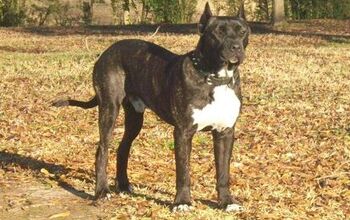Research Finds Unlikely Dog Breeds Carry Genes for Genetic Disorders

You might only be familiar with a few different inherited disorders in dogs, but in actuality, there almost 100.
With genetic testing, researchers found that one in 6 dogs had genes for at least one inherited disorder. What surprised them most was that the different disorders were seen in breeds not expected to carry that disorder.
What Types of Genetic Disorders Might Your Pet Have?
Here’s a list of only five of the 100 different genetic disorders that dogs can have:
- Hemophilia: This is a bleeding disorder due to a missing clotting factor in the blood. German Shepherds, especially females, are most prone to get it.
- Von Willebrand’s disease: This is a usually mild bleeding disorder that affects clotting. The dog that has this inherited disorder will have problems with bleeding since the clotting factors are missing. Type I is mild; Type II and III are more severe and could lead to death. The disorder is found in Doberman Pinchers.
- Pyruvate Kinase deficiency: The molecule pyruvate kinase is an enzyme that is used in the biochemical cycle for creating energy in red blood cells. It results in an increased heart rate and low tolerance for exercise – a lazy dog. Anemia is one of the lab findings. This disease progresses to cause enlarged spleen and liver, and cirrhosis. West Highland Terriers and Basenjis are the dogs that most commonly show the trait.
- Hip Dysplasia: This disease is probably one of the most common types of inherited disorders and one of the most well known. There are many genes that contribute to this disorder; veterinarians call it polygenic. Hip dysplasia usually shows up in older dogs, but if it’s severe, it will be seen in younger dogs. The hip joint is a ball and socket joint and ligaments hold the ball in the socket.
If the ligaments become lax, then the ball pops out of the socket and is out of alignment. That’s when you need a doggy chiropractor! However, the condition makes it possible for the hip to pop out of alignment many times during the day. The dog has a hard time getting up from a lying down position and walking/running becomes problematic.
The condition is improved with ideal body weight, lots of nutrients that support the joints (such as silica) and not letting your dog overexert himself on extra long walks. Veterinarians prescribe anti-inflammatory drugs and sometimes recommend glucosamine. Large dogs and extra large dogs are more prone to have hip dysplasia than small ones. - Pannus: This disorder is a chronic corneal inflammation. The first sign of it is a grayish haze over the eye. Over time, blood vessels and cells cover the cornea and cause a loss of vision. In atypical pannus, the third eyelid, not the cornea, is affected. It’s an immune system reaction and one seen in German shepherds. Radiation damage, which is more prevalent in higher altitudes and dogs that stay outside all day long will worsen atypical pannus.
It’s certainly something to think about, and you may want to do some genetic testing on whether or not that doggy looker you have your eye on is free of genetic disorders BEFORE you get her. Now, veterinarians have genetic testing at their fingertips and you can know the truth in about a week. Check with your veterinarian…
[Source: Science Daily]

More by Donna Schwontkowski






















